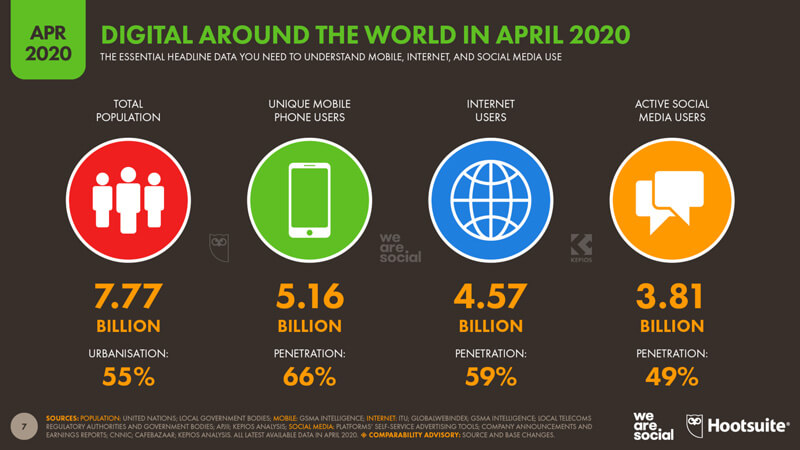After the year we’ve had, thoughts of business plans, budgets, and goals are never far away. What’s the best use of our (perhaps limited) marketing funds? If management is looking for budgets to cut back, SEO is not one of them. With 81 percent of consumers going online to search for products and services, establishing a manageable SEO budget is crucial for future success.
Discover how to maximize annual marketing money with savvy tips on how to budget for SEO in the new year and beyond. The right investment in SEO boosts targeted traffic and increases conversion rates.
Tackle the Basic Questions
From corporations with dedicated marketing teams to small businesses with multi-faceted managers, SEO remains unpredictable. As Google continually refines its algorithms to improve the user experience, SEO protocols continuously evolve and change.
Keeping up with those changes often seems impossible. Outsourcing to a professional team helps companies stay on-track regardless of inevitable evolutions in the SEO climate. Reaching the first page of Google requires dedication, and staying there means ongoing work.
Start by tackling the basic questions, such as:
- What results does the marketing team expect from SEO campaigns?
- What aspects of optimization are most relevant to achieving the company’s goals?
- How much money can be allocated to professional SEO services to complement the efforts of your current team?
Break It Down
Keeping it simple helps companies develop an SEO budget that works fiscally and branding and marketing. Break down SEO strategies into three categories:
- On-page SEO focuses on the website content itself, such as web pages and blog articles, and ways to optimize the content to boost site ranking for relevant keywords per the business’ goals.
- Off-page SEO relates to the links directing to the site from other online entities, which are the number of natural backlinks establishing site trust in search engines’ scope to increase rankings.
- Architectural, or technical SEO, pertains to the site’s backend to ensure coding, setup, page speed, accessibility, and other factors work correctly to deliver a smooth user experience.
Check Out the Traffic
The next step is to analyze traffic to determine where to focus future SEO efforts. While visibility matters, productivity is the goal, which means figuring out the target audience. Google Analytics reveals how consumers arrived at specific web pages. Traffic sources include:
- Organic traffic, which is driven by search engines such as Google
- Paid search traffic which comes from click-through ads on search engines
- Direct traffic that comes from users entering the URL directly into a web browser
- Social media traffic from users from platforms like LinkedIn, Facebook, and Instagram
- Email traffic from consumers who click links in email marketing messages
- Text traffic from consumers who click links in text messages
- Referral traffic from sources other than search engines, such as links to the site that appear on another website
It takes more than a steady stream of traffic to make a website successful. Attracting targeted traffic improves conversion rates because consumers are more likely to take action. SEO campaigns analyze traffic sources to refine strategies to appeal to the target audience, driving more organic traffic to the site.

Setting Goals – Go Beyond Keywords
Once upon a time, keywords were the primary focus of most SEO campaigns. While relevant keywords are still part of foundational SEO, goal setting goes beyond preliminary keyword research and traffic analysis. Goals to consider may include:
- How do you plan to improve organic sessions, and by what percentage by the end of the year?
- How will you increase conversions, and by what percentage monthly?
- In what ways will SEO campaigns help increase revenues and by what percent quarterly?
Keep in mind goals should be measurable, achievable, and tested over time. Google reports it takes between four months and one year to implement improvements and realize the potential benefit.
Establish benchmarks at six months and one year to review progress and make significant tweaks in the overall SEO strategy. Monthly SEO testing and reports show where minor changes should be made to maximize current marketing campaigns.
Review SEO Tactics
Beyond PPC campaigns, SEO strategies focus on attracting organic traffic from both trending and evergreen sources. A healthy combination of both keeps the target audience engaged and attracts new visitors—techniques to bring traffic to the site change based on current search engine algorithms and other factors.
Current content must be relevant and address the typical searcher’s common questions. Look to question and answer sites, such as Quora, to determine what the target audience wants to know. Craft articles, product descriptions, and content to provide meaningful answers that resonate with the visitors’ needs. Refresh older content with updated keywords and facts to remain important to readers and search engines.
Social media is another way to drive organic traffic to a site, build meaningful relationships, brand a business, and gather information about consumers. Inquiries, posts, sharing habits, and conversations help companies determine what to do next. Sharing site content, including blogs and product updates, helps build awareness and authority.
Develop a Strategy for Success
Metrics matter when developing an effective strategy for success. Speculation and sticking to old methods means falling behind in a fast-paced international marketplace. Without accurate reporting, it’s impossible to figure out an SEO budget.
Tally the labor, time, and management costs for content, website development, keyword research, topic development, social media campaigns, and other SEO marketing strategies. Where is your traffic coming from, and how can you hone in on that target audience? What areas are best to focus on when planning the year’s SEO strategy?
Management also makes a difference by maximizing your ROI. Examining SERPs and reporting targeted results ensures every dollar spent is put to good use. For example, refreshing older articles that still convert could be more cost-effective than writing new ones. Work out a budget based on techniques that build on past SEO efforts for a continued ROI.
Keep an Eye on the Competition
Another crucial factor is keeping up with the competition. SEO analysis should include where your site stands compared to the top-ranking sites in the industry. Competitor analysis helps companies refine their approach to develop a unique niche and corner a market segment. For example, studying a competitor’s backlinks can help companies find trusted websites to host their links.
Plus, continued competitor analysis provides insight into content and product development. Companies discover areas where they missed the mark to provide keyword-focused content that delivers what searchers need now. Getting stuck on past successes holds companies back from future achievements – and staying ahead of the competitors. Also, be aware of competitors’ weaknesses to develop potential strengths to watch traffic – and conversions – surge.
SEO reporting with competitor results helps companies figure out a marketing budget that works. A company that falls behind on the search engines and profits can take months or years to recover. Investing in the right SEO campaigns today helps companies stay ahead of the curve, even as the search engine algorithms change.
Magnify Mobile Efforts
BrightEdge research shows customers buy both large and small items on mobile devices. Over the past five years, more Google searches have started to occur on mobile devices than computers in ten different countries, including the United States and Japan. With that in mind, many companies focus intensely on a mobile strategy to attract both local and international customers.

Over half of online users use their mobile phones to buy products online, with two out of every three using shopping apps on their devices. Website architecture is crucial to ensure site content loads effectively on all devices, including tablets and smartphones. Mobile content should be user-friendly, easy to navigate, and include a clear call to action.
If your current SEO campaign doesn’t include mobile marketing, it’s time to consider adding it to the budget. With many searchers looking for items on-the-spot, businesses without a mobile marketing strategy miss potential profits.
Round Table Review
A new normal taught everyone how to meet virtually to achieve their goals, despite location and circumstances. Use these tools to conduct round table reviews of current and future SEO campaigns. Periodic meetings between management, marketing, and SEO professionals help make the most of this budget.
Use the time to discuss SEO testing and reports, including competitor analyses, to refine the campaign techniques. Mention trending topics to incorporate into future articles and content, so everyone is focused on achieving the same goals.
Working with a team of SEO professionals helps keep everyone on-board with no lapses in reporting or updates. Staying on top of SEO results helps companies save time and money by building great evergreen content that can be refreshed in the future.
Following tips on how to budget for SEO campaigns in the new year helps companies achieve or exceed their expectations, regardless of the international marketplace’s conditions. Trying to tackle the evolving world of SEO independently leads to frustration and lost opportunities.
The professional team at Galileo Tech Media works with companies of all sizes to establish SEO budgets that work fiscally and organically. Driving targeted traffic to your site brands the business, establishes trust, improves rankings, and increases profits.
Contact us today to learn tips on how to budget SEO campaigns that fit your budget and business plan. Work with a strategic partner to stay ahead of the curve – and the competition!

